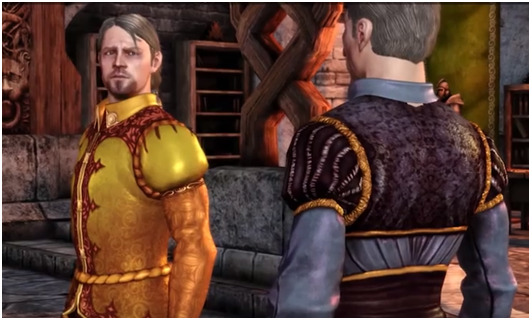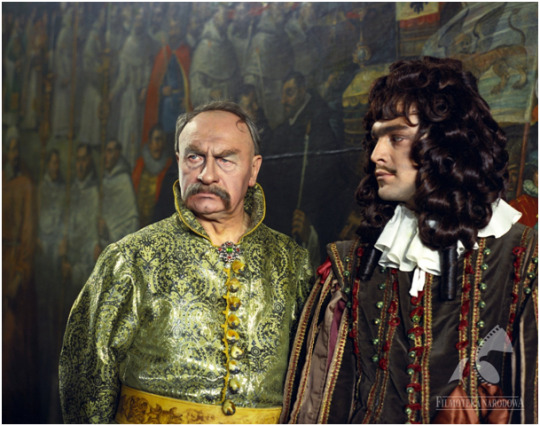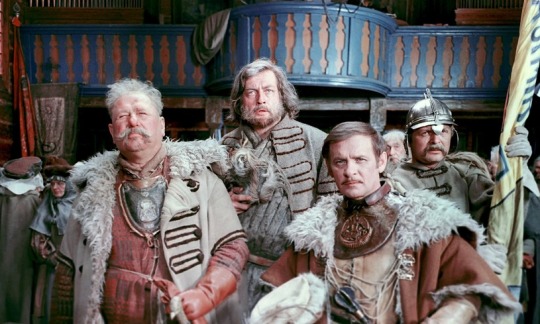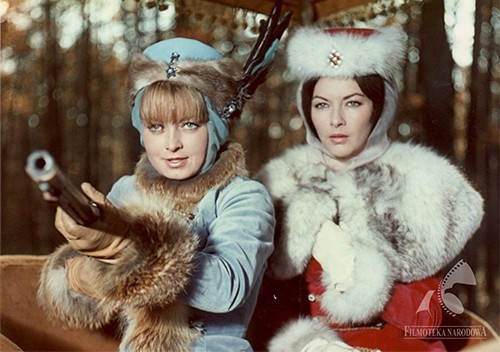#eg i could probably make a pattern and/or mess with a similar one. but. materials are another issue
Explore tagged Tumblr posts
Text
i Wish i had some degree of sewing/plushmaking powers because honestly that might be the only thing between me and diying my own light dragon plushie. if i can be so real
#this has haunted me ever since totk came out btw i need merch of her SO BADDDDD (read: britains aforementioned merch problem)#i HAVE considered making a jacket patch for her or smth that i could stitch on a jacket/beanie. but... marketable plushie..#not just that. if i could make a good/malleable pattern i could hobble together More Dragons also#maybe i could even make a plushie for my link dragon in the ultimate self-indulgent move. but well. its out of my hands#im Mostly familiar with the building process of plushmaking. but not so much the actual Doing#eg i could probably make a pattern and/or mess with a similar one. but. materials are another issue#also im being pretty loose with size and stuff. id probably make chibi-ish ones but also a Long one would be fun. in my opinion#anywayyyy im having so much fun w my latest wip. hope all is well#personal.txt
10 notes
·
View notes
Text
Today is 11/11 which marks 101 years of Poland regaining independence and I thought it is a perfect time to publish a post that I’ve been working on for a while.
Ferelden from Polish Perspective aka Why We Can Relate to Dog Lords So Much.
This is a sort of compilation of my own thoughts I had while playing the games and various talks with my Polish friends. It is not supposed to force any ideas or teach others how to interpret the game. I just thought it could be entertaining for anyone interested in history and culture. I was trying not to elaborate too much on the subject here but it still ended up being A Very Long Post TM. To make this post a little neater to read, I divided this post into 4 sections:
1. History
2. Fashion and Food
3. Politics
4. Relationships with Other Countries
I will be very happy if you find a minute or two to read some of my points. If you have any additional questions or comments feel free to leave me a message :)
And once again - enormous thanks to @aeducanka for proofreading. I would be a poor mess without you.
DISCLAIMERS
1. Yes, I know that Ferelden is based mostly on Anglo-Saxon England and I have no problem with that. True, I may be a little disappointed that the game includes references to so many European cultures and countries (France, Byzantine Empire, Venice, Roma culture etc.) and yet practically ignores Central and Eastern Europe completely, BUT this post is not meant to be a “Where is my representation?!” rant. If I wanted a game with Slavic culture vibes, I could always play the Witcher trilogy again. We are doing alright.
2. I am in no way an academic specialist on culture or history, even these of my own country. I did some research, but most of facts and figures can be easily found on wikipedia. You can treat this as just some observations and headcanons of a 29 y/o Polish woman, who has grown up and lives in Poland.
3. The main focus of this post is Poland in different moments of history. However, when talking about fashion and political system I will mostly refer to Polish culture between the 16th and 18th century. During that time Poland and Lithuania formed a dual state known as The Polish–Lithuanian Commonwealth. So, whenever I refer to this particular period, I will use the term “Commonwealth” instead of “Poland”.
PART 1 – HISTORY
The country’s name origin
Ferelden means „fertile valley” in Alamarri tongue [WoT vol. 1], Poland most probably comes from the Slavic word „pole” meaning „field”. They both refer to land that can be cultivated.
History of unification
Ferelden lands were divided between many tribes until they were unified by Calenhad Theirin. He fought and defeated other Alamarri tribes’ leaders, proclaimed Andrastianism as the new official religion of his kingdom and started the Theirin dynasty.
A similar story can be told about Mieszko I of Poland – the leader of the Polans tribe (one of many Slavic tribes of that time) who, by means of war and diplomacy, united many Slavic tribes and created the Polish country in 965. In the same year he was baptised, abandoning native paganism in favour of Christianity. Mieszko started the Piast dynasty which ruled Poland for over 400 years. He never officially became a king, though – his son, Bolesław, was crowned king in 1025.
Also, Ferelden is a relatively young country compared to countries like Orlais or Tevinter. Even if Poland has over 1000 years of history as a country, it has to be noted that some Western European countries have a longer history (eg. the Carolingian Empire or the Visigothic Kingdom). Polish lands have also never been a part of the Roman Empire.
Fun fact – the half-legendary sword of the first king of Poland, Szczerbiec, was stolen by Prussian troops during their invasion on Poland in 1795. Calenhad’s sword, Nemetos,was lost during the Orlesian invasion on Ferelden [WoT vol. 1].
Ostagar
Now, I will tell you a story. It is about a young king (in his twenties), a little reckless, wanting to be the leader who stood against the great invading threat to his country, a little blinded by the perspective of glorious victory. Just before the battle one of his allied forces betrayed him and did not provide the promised aid. The enemy army was too strong, too large. The king’s army was defeated, the king was killed in battle and his body was taken by the enemy. The king did not have children and his younger brother had succeeded him.
No, I’m not talking about Cailan, this is the story of Władysław III of Poland.
PART 2 – FASHION AND FOOD
Fashion
All cultures in Thedas have their own style and fashion. Ferelden is supposed to be this “We like fur and warm fabrics” culture, opposite to the extravagant Orlesian style. However, I have few problems with how Fereldan fashion is shown in the game.
1. It is too early-medieval looking. I know, it is a fantasy, you can mix ancient Egypt with steampunk and nobody should care. But we see, from cultural and technological perspective, that Thedas in Dragon Age is more renaissance/baroque than your typical medieval. Heck, some elements, like the infamous Formal Attire, look like clothes from 18th or even 19th century! In comparison, outfits like Arms of Mac Tir or Robes of the Pretender (though good looking) look like something from the Vikings era.
2. We do not see many good looking Fereldan outfits in the games. I like Alistair’s royal outfit and some of Fereldan armors and clothes from DA:2 but remember this?

Or this?

Yeah, Dog Lords can do better :/
And that’s why I like to headcanon Fereldan fashion as something more resembling the Commonwealth fashion between the 16th and 18th century. It was an interesting mix of European and Asian influences and I think it would work perfectly with canon Ferelden because:
1. People LOVED fur elements in their clothing. Fur lining on coats, fur caps decorated with feathers, pelts of wild carnivores (lions, wolves, bears, etc.) on armour - fur was everywhere.
2. It is simple but regal. The quality of materials and patterns were more important than volume and the number of layers. A typical male noble outfit consisted of a long garment (żupan), a long, ornate sash, one of two types of cloak (delia or kontusz) and a fur cap decorated with feathers and jewels. If you compare it with the baroque fashion from France it is less extravagant and more practical. No wigs, no flounces, no man tights.
Compare these two dudes – the older one is dressed Commonwealth style, the younger – in French style.

The Deluge, 1974
Of course some wealthy noblemen who spent a lot of time in France or other Western countries tended to adapt their style, but from what I know it was not that common. Women, on the other hand, tended to dress more similar to their Western counterparts (especially when they wanted to look fashionable) but their everyday dresses were not that much elaborate. They also wore kontusz (though the female version was shorter) and fur caps when outside.
Below I post some more costumes to better illustrate my point. They all come from Polish movie adaptations of H. Sienkiewicz’s novels (I looove both the books and the movies).



With Fire and Sword, 1999


The Deluge, 1974

Fire in the Steppe, 1968
And I could not NOT to mention the wonderful interpretation of Fereldan armor and clothing for my OCs drawn by @ankalime - I still can’t get over how beautiful they look :3
Food
From what we know, Fereldan food is very similar to traditional English cuisine (lamb and pea anyone?), HOWEVER, I can totally see some traditional Polish dishes on Fereldan tables. Let us look at this part of Alistair’s banter with Leliana:
“Now here in Ferelden, we do things right. We take our ingredients, throw them into the largest pot we can find, and cook them for as long as possible until everything is a uniform grey color. As soon as it looks completely bland and unappetizing, that's when I know it's done.”
Dishes like bigos, flaki or goulash (mostly associated with Hungary but also present in various forms in Slavic countries) totally fit this description. Tasty and hearty but I know some foreigners see them as totally unappetizing :P
Poland is also culturally more into beer than wine (high five, British Isles!), so Fereldan ale fits this image, too.
PART 3. POLITICS
When I first played DA:O and heard about choosing the new queen/king on Landsmeet I was like “omg, they have wolna elekcja!”
The canon Ferelden is a feudal country, however, there seems to be less focus on the king's absolute power – instead, the nobles can choose the king they like, the hierarchy inside this particular social class is also less striking than one can expect.
And this brings me to the concept of Golden Liberty. (I will quote Wikipedia here, I am not that smart to explain this well in English on my own).
The Golden Liberty was a unique political system of the Commonwealth – a mixture of monarchy, oligarchy and democracy. The most distinctive elements of that systems were:
- All nobles regardless of rank or economic status, were considered to have equal legal rights (and you did not have to own a town or two to be considered a noble – a large part of the nobility owned nothing more than a farm, often little different from a peasant's dwelling, and some did not even have that much). The rights were, for example:
- Neminem captivabimus ("We shall not arrest anyone without a court verdict").
- right to vote – every nobleman, whether rich or poor, could vote. Of course if someone was rich, they could bribe others to gain more political influence, but it is the same as today.
- religious freedom – unlike many other European countries of the time, people in Commonwealth were legally free to follow any religion. The Commonwealth became a common refuge for people who were persecuted for religion in their homelands. The religious freedom was not restricted to nobility but to all social classes.
- rokosz - the right to form a legal rebellion against a king who violated nobility freedoms.
- the monarchy was elective, not hereditary, and the king was elected by the nobility. That “democracy” was not, of course, perfect, as only male noblemen had the right to vote and elect the king. However, it was still between 10-15% of the population who could vote. In comparison, “in 1831 in France only about 1% of the population had the right to vote”
The Landsmeet in DA:O is basically the free election (well, maybe minus the duel :D) and I would say the Fereldan nobility does not feel obliged to be obedient 100% of the time.
PART 4. RELATIONSHIPS WITH OTHER COUNTRIES
Orlesian occupation
We know from the game that Orlais invaded Ferelden in 8:24 Blessed and occupied it for decades. The Fereldan forces were rebelling against the occupant and finally, under the command of Maric Theirin, they won their freedom.
Again, it is a huge topic, so to summarize: Polish-Lithuanian Commonwealth suffered a similar fate in 1795 as it was conquered and divided between Habsburg Austria, the Kingdom of Prussia and the Russian Empire. For 123 years Poles have been trying to regain their country, have started several uprisings and lost many lives in their fight for independence. Finally, at the end of WW1, independent Poland reappeared on the map of the world. Then came the WW2, probably the most tragic event in Polish history – the cities were razed to the ground, a vast part of national heritage destroyed or stolen, and over 6 million people (1/5 of the pre-war population) were killed.
So yeah, a country invaded and occupied for decades by its neighbour sounds way too familiar to be ignored.
Ferelden in the eyes of Orlesians
The Fereldans are a puzzle. As a people, they are one bad day away from reverting to barbarism. (...) They are the coarse, wilful, dirty, disorganized people [DA:O Codex Entry: Culture of Ferelden].
Yeah... this, unfortunately, sounds familiar. I fear that the stereotype of a drunk, stupid, poor, thieving Poles (and other Slavic nations), which originated from WW2 propaganda, is somehow still alive in the West. I will not dive deeper in this subject because I want to believe my followers have their own brain cells and I do not need to explain how hurtful and offensive those stereotypes are.
My point is – I could identify easily with a fantasy country that is located east from the “centre of culture and civilisation” and is unfairly believed to be more barbaric.
So – for all two of you who bothered to read the whole thing - thanks for coming to my TED talk.I really appreciate the time you spent here :)
#dragon age#my writing#ferelden#headcanon#heavy slavic breathing#finally!#it took so long#but i am really happy i can post it here
537 notes
·
View notes
Text
If A Nuclear Bomb Is Dropped On Your City, Here’s Where You Should Run And Hide
People who survive a nuclear blast may be exposed to radioactive ash and dust called fallout.
Finding a good shelter as soon as possible and going inside is critical to surviving fallout.
A scientist has come up with a strategy for when and whether to move to a better fallout shelter.
President Trump has egged on a new arms race. Russia violated weapons treaties to upgrade its nuclear arsenal. North Korea is developing long-range missiles and practicing for nuclear war and the US military is considering preemptive attacks on the isolated nation’s military facilities.
Meanwhile, nuclear terrorism and dirty bombs remain a sobering threat.
Though these events are unlikely to trigger the last-ditch option of nuclear war, let alone a blast in your neighborhood, they are very concerning.
So you might be wondering, “If I survive a nuclear-bomb attack, what should I do?”
Michael Dillon, a Lawrence Livermore National Laboratory researcher, crunched the numbers and helped figure out just that in a 2014 study published in the journal Proceedings of the Royal Society A: Mathematical and Physical Sciences.
Likewise, government agencies and other organizations have also explored the harrowing question and came up with detailed recommendations and response plans.
The scenario
TTstudio/Shutterstock
You are in a large city that has just been subjected to a single, low-yield nuclear detonation, between 0.1 and 10 kilotons.
This is much less powerful than the bomb dropped on Hiroshima about 15 kilotons. However, it’s not unlikely when looking at weapons like the new B61-12 gravity bomb, which is built by the US, maxes out at 50 kilotons, and can be dialed down to 0.3 kilotons. (Russia and Pakistan are working on similar so-called “tactical” nuclear weapons.)
Studieshave shown that you and up to 100,000 of your fellow citizens can be saved that is, if you keep your wits about and radiation exposure low enough.
One of your biggest and most immediate goals is to avoid nuclear fallout.
How to avoid fallout radiation
Fallout is a mess of bomb material, soil, and debris that is vaporized, made radioactive, and sprinkled as dust and ash across the landscape by prevailing winds. (In New York City, for example, a fallout zone would spread eastward.)
FEMA
The best thing to do is to find a good place to hide the more dense material between you and the outside world, the better then wait until the rescuers can make their way to help you.
The US government recommends hiding in a nearby building, but not all of them provide much shelter from nuclear fallout.
Poor shelters, which include about 20% of houses, are constructed of lightweight materials and lack basements. The best shelters are thick brick or concrete and lack windows. Like a bomb shelter.
This infographic from a government guide to the aftermath of nuclear attacks gives a rough idea on what makes a building a good or bad place to hide from fallout:
Levels of protection from radiation that various buildings and locations offer. Lawrence Livermore National Laboratory/FEMA
Hiding in the sub-basement of a brick five-story apartment building, for example, should expose you to just 1/200 of the amount of fallout radiation outside.
Meanwhile, hanging out in the living room of your one-story, wood-frame house will only cut down the radiation by half, which if you are next to a nuclear explosion will not do much to help you.
So, what do you do if there isn’t a good shelter right near you? Should you stay in a “poor” shelter, or risk exposure to find a better one? And how long should you wait?
Should you stay or should you go?
M.B. Dillon/Proceedings of the Royal Society A: Mathematical and Physical Sciences
In his 2014 study, Dillon developed models to determine your best options. While the answer depends on how far away you are from the blast, since that will determine when the fallout arrives, there are some general rules to follow.
If you are immediately next to or in a solid shelter when the bomb goes off, stay there until the rescuers come to evacuate you to less radioactive vistas.
If you aren’t already in a bomb shelter, but know a good shelter is about five minutes away maybe a large apartment building with a basement that you can see a few blocks away his calculations suggest hoofing it over there quickly and staying in place.
But if the nice, thick-walled building would take about 15 minutes travel time, it’s better to hole up in the flimsy shelter for awhile but you should probably leave for a better shelter after roughly an hour (and maybe pick up some beers and sodas on the way: A study in the ’50s found they taste fine after a blast).
This is because some of the most intense fallout radiation has subsided by then, though you still want to reduce your exposure.
Other fallout advice
Below are some other guidelines that Dillon compiled from other studies and are based on how decent your first and second shelters are:
M.B. Dillon/Proceedings of the Royal Society A: Mathematical and Physical Sciences
One of the big advantages of the approach that this paper uses is that, to decide on a strategy, evacuation officials need to consider only the radiation levels near shelters and along evacuation routes the overall pattern of the radioactive death-cloud does not factor into the models. This means decisions can be made quickly and without much communication or central organization (which may be spare in the minutes and hours after a blast).
Other researchers have analyzed other similar scenarios in papers, whose findings are summarized in the chart below:
M.B. Dillon/Proceedings of the Royal Society A: Mathematical and Physical Sciences
Jennifer Welsh wrote a previous version of this post with Andy Kiersz.
Read the original artice on Tech Insider. Copyright 2017.
Now watch: This Cold War-era technology could safely power the world for millions of years
Read more: http://ift.tt/2nH7QQ5
from If A Nuclear Bomb Is Dropped On Your City, Here’s Where You Should Run And Hide
0 notes